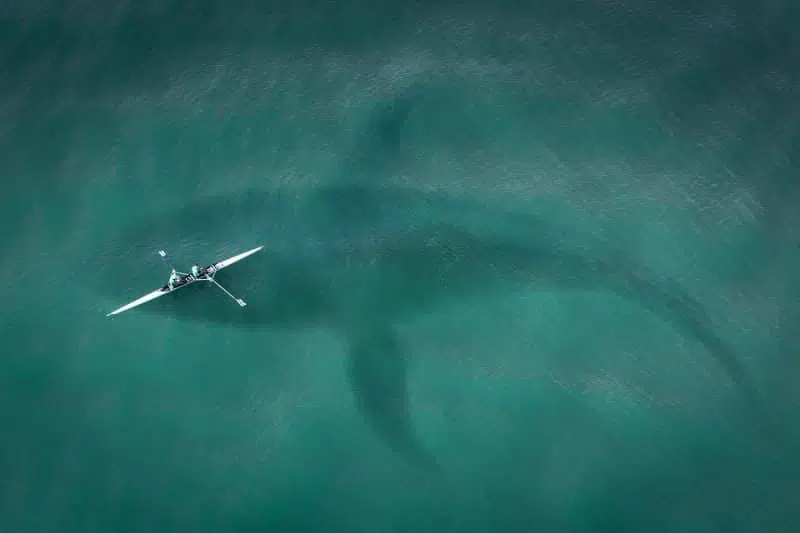Welcome to a colossal journey through “The Top 10 Biggest Animals in the World”! Have you ever marveled at the sheer size of Earth’s most gigantic inhabitants? Prepare to have your mind expanded as we unveil a list that celebrates the grandeur of nature’s largest creatures.
Read on to learn more about these giants of the world, or skip ahead to the animal that piques your interest. Enjoy!
Key points
| Animal | Key Points | Where to See |
|---|---|---|
| 1. Blue Whale | – World’s largest living creatures. – Tongues as heavy as an elephant’s. – Hearts as valuable as a car. – Endangered, with only 25,000 remaining. | – Found in oceans worldwide except the Arctic. – Migrate from polar seas in summers to the Equator in winter. |
| 2. North Pacific Right Whale | – One of the world’s right whale species. – Slow-moving with a heart-shaped blow. – Critical Habitat in the Bering Sea. | – Generally observed in the Bering Sea between April and September. |
| 3. African Elephant | – Largest land creatures. – Herds spanning 37 African countries. – Known for their trunks and large ears. | – Best sightings in places like the Okavango Delta in Botswana and Chobe National Park in Botswana. |
| 4. White Rhinoceros | – Named for their wide mouths. – Found mainly in South Africa. – Actually gray, not white. | – Primary habitat in South Africa, with smaller populations in Kenya, Namibia, and Zimbabwe. |
| 5. Hippopotamus | – Third-largest land animals. – Adaptations for both land and water. | – Spotted in places like National Reserve in Kenya, and Kruger National Park in South Africa. |
| 6. Giraffe | – Tallest terrestrial animals. – Males can reach up to 5.5 meters. | – Best sightings in places like Etosha National Park and Skeleton Coast National Park in Namibia. |
| 7. Saltwater Crocodile | – World’s largest crocodile species. – Exceptional swimmers with ferocious bite. | – Lurk in brackish and freshwater environments, often observed far out at sea. |
| 8. Leatherback Sea Turtles | – Endangered, with populations decreasing. – Largest turtle species. | – Primarily in open oceans, with nesting sites along the eastern Pacific coast and various other locations. |
| 9. Ostrich | – Flightless and heaviest bird species. – Exceptional runners, reaching high speeds. – Found in semiarid plains and woodlands of Africa. | – Sighted in places like Cape Point National Park in Cape Town, South Africa, and Oudtschoon, Western Cape. |
| 10. Gaur | – Largest wild cattle species, also known as the Indian bison. – Vulnerable status on the IUCN Red List. | – Previously widespread but now severely fragmented, with some populations in regions like India, Bhutan, and Myanmar. |
#1 Blue Whale
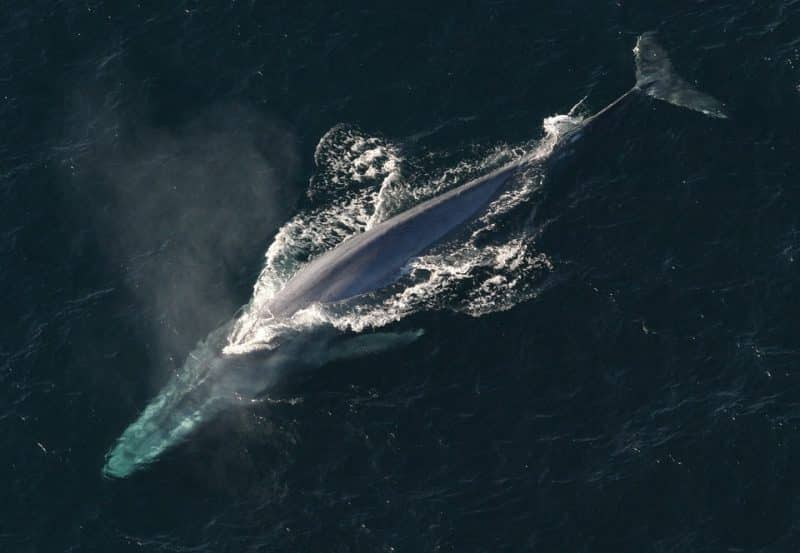
Blue whales are the world’s most enormous living creatures.
Their tongues can be as heavy as an elephant’s.
Their hearts are worth as much as a car. Blue whales are still endangered, with only 25,000 thought to exist today.
Where to see Blue Whales
Blue whales can be found in all of the World’s oceans except the Arctic; they usually swim alone or in pairs. Summers are often spent eating in polar seas, followed by long migrations to the Equator as winter approaches.
- Saguenay – St. Lawrence Marine Park, Québec.
- Reykjavík and Húsavík, Iceland.
- Pico Island, Azores.
- Monterey Bay, California.
- Baja California Sur, Mexico.
- Mirissa, Sri Lanka.
- San Diego, California
#2 North Pacific Right Whale
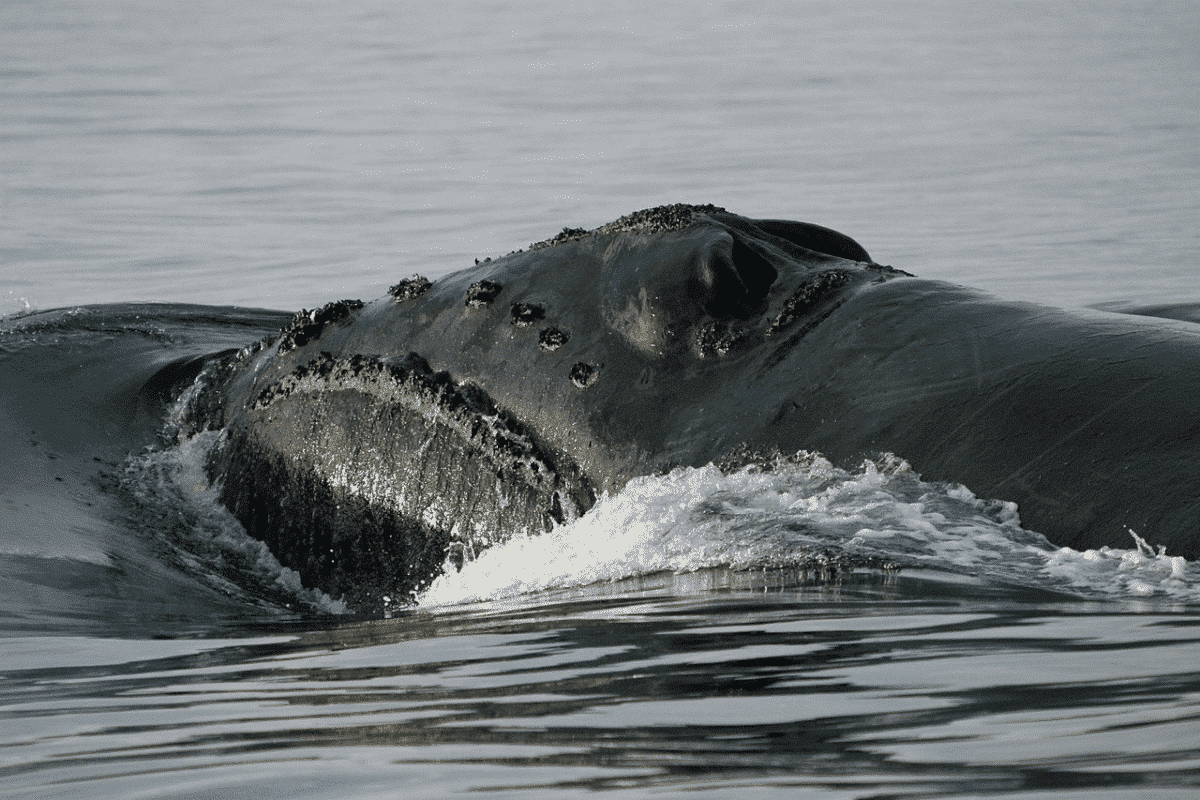
Right whales are found in three different species around the World. The Southern right whale, the North Atlantic right whale, and the North Pacific right whale are all found in the Southern Hemisphere.
The Sea of Japan, the Okhotsk, the Gulf of Alaska, the Bering Sea, and the eastern Aleutian Islands are all part of the North Pacific right whale’s range. They are similarly slow moving, and when they come to the surface to breathe, their blow is in the shape of a heart, or V. Their triangular tail fluke is also a distinguishing feature.
Where to see North Pacific Right whales
While the distribution is unknown, observations of North Pacific right whales in the Bering Sea have been reasonably constant between April and September. Consequently, in 2006, a piece of the area was declared a Critical Habitat for them.
Little is known about where they go or breed outside of this period. Unfortunately, habitat loss, human disturbance, entanglement in fishing gear, and collisions with vessels pose severe threats to North Pacific right whales.
#3 African Elephant
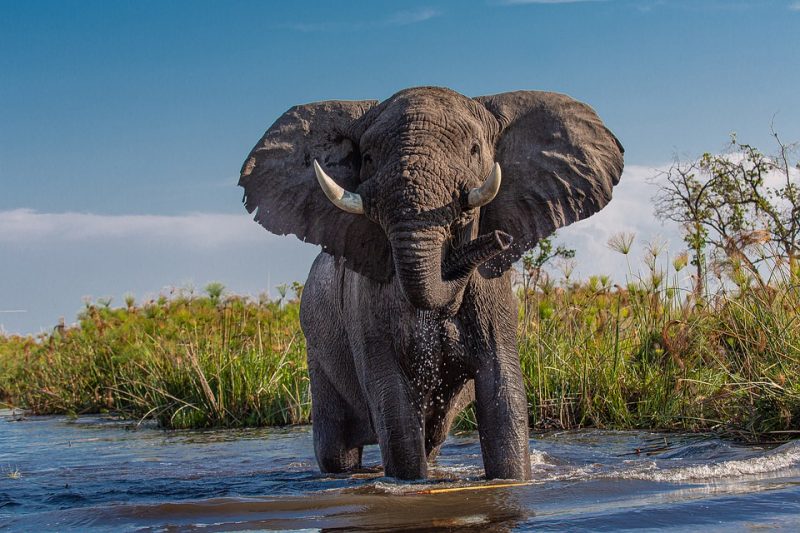
African elephants are the World’s most enormous land creatures. Their herds go over 37 African countries. Their trunk, utilized for communication and object processing, is immediately identifiable. Their vast ears also assist them in dissipating heat.
There are just 415,000 elephants left in Africa today. While elephant poaching is declining, especially in East Africa, it is still driving the species dangerously close to extinction.
Where to see the African Elephants
The Top 3 Destinations to see Elephants in Africa
- The Okavango Delta in Botswana.
- Chobe National Park in Botswana.
- Addo Elephant Park in South Africa.
#4 White Rhinoceros
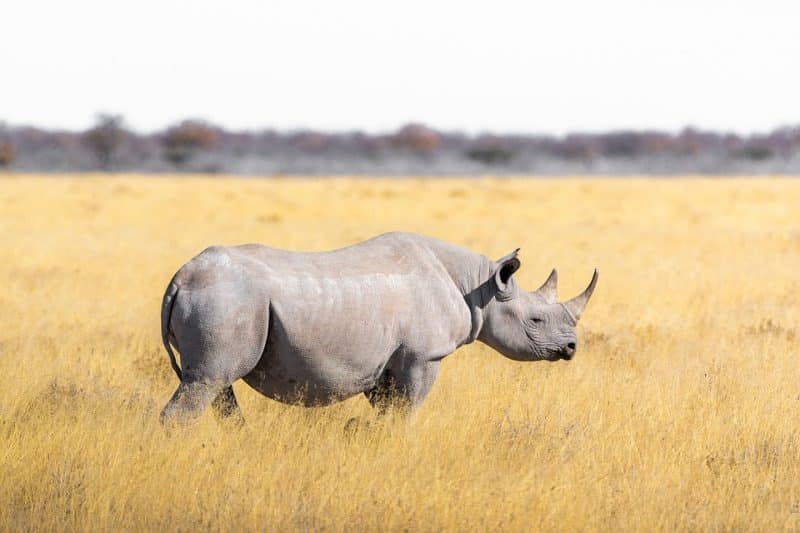
Due to the form of its mouth compared to its African cousin, the black rhino, the white rhino is also known as the Square-lipped rhino. Moreover, white rhinos are divided into two subspecies: Southern and Northern white.
Interestingly, the titles black and white rhinos are deceptive, as both are grey in color. The Afrikaans term for wide (‘wyd’) is thought to have given the white rhino its name owing to its vast, square lip (in contrast, black rhinos have a pointy upper lip). Furthermore, because early English explorers misinterpreted this word for ‘white,’ this species was named ‘white’ rhino, while the other was called ‘black’ rhino.
Where to see White Rhinos
The Southern white rhino is primarily found in South Africa, with lesser populations in Kenya, Namibia, and Zimbabwe.
#5 Hippopotamus
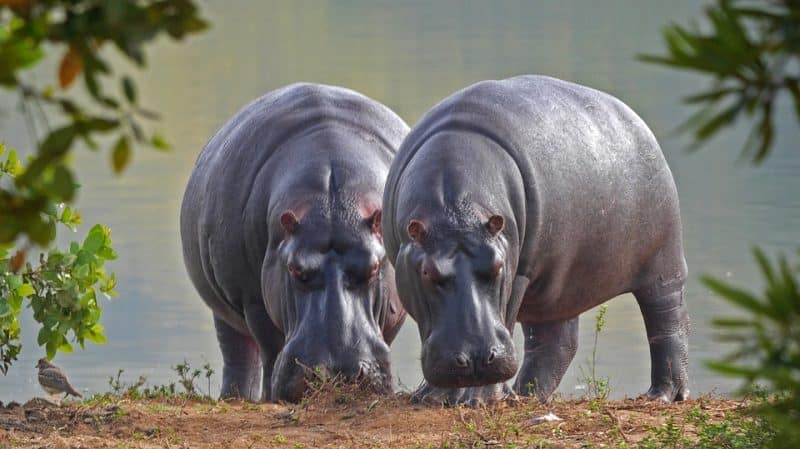
Hippos are divided into two species: the hefty/common hippo and the smaller pygmy hippo. After elephants and white rhinos, hippos are the third-largest living land animal.
They have adaptations to their semi-aquatic surroundings that allow them to move quickly on both water and land, despite their big and bulky appearance. Firstly, their tiny legs enable tremendous propulsion through the water. Additionally, their feet feature four webbed toes that splay out to distribute weight equally and sufficiently support them on land.
Where to see Hippopotami
- Okavango Delta, Botswana.
- Masai Mara National Reserve, Kenya.
- Kruger National Park, South Africa.
- Hluhluwe National Park, South Africa.
- Serengeti National Park, Tanzania.
#6 Giraffe
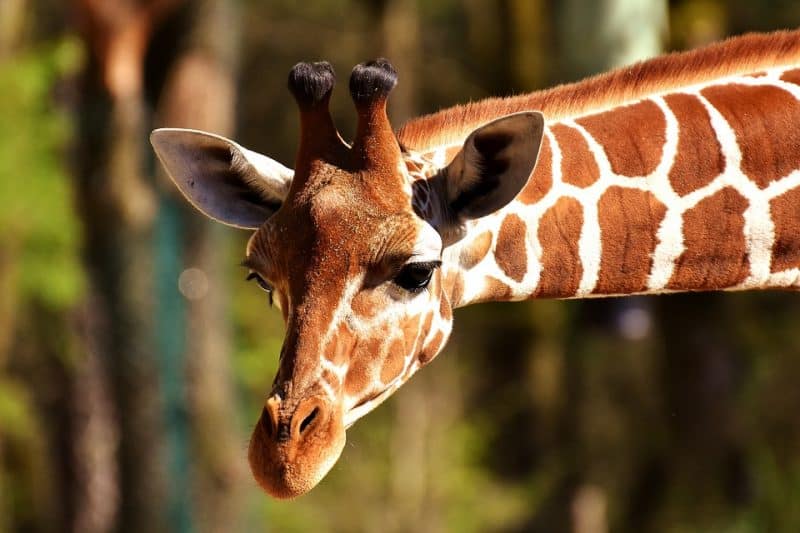
Giraffes, known for their sociable nature, often form loose herds without any strong group bonds. Male giraffes, being migratory, frequently move among various groups of females, while the younger ones typically remain with several adult females.
Regarding their reproductive behavior, giraffes don’t adhere to a specific breeding season. This leads males to continuously seek out potential mates. In their native African habitat, they prefer females with notably long legs and a distinctive coat pattern, characterized by uneven brown patches against a lighter backdrop. Remarkably, giraffes are the tallest land animals on Earth, with males (known as bulls) reaching heights of up to 5.5 meters (18 feet), and females (cows) growing up to 4.5 meters tall.
Where to see Giraffes
- Etosha National Park, Namibia.
- Skeleton Coast National Park, Namibia.
- Kruger National Park, South Africa.
- Serengeti National Park, Tanzania.
- Maasai Mara National Reserve, Kenya.
- Giraffe Manor, Kenya.
#7 Saltwater Crocodile
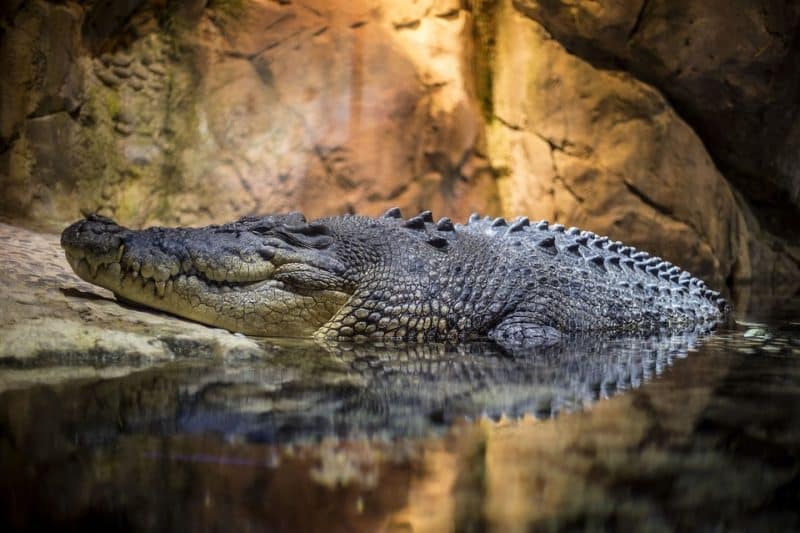
Saltwater crocodiles are the World’s largest crocodile species and the World’s largest living reptile. 2. Male saltwater crocodiles have been measured at 23 feet (7 meters) in length and weigh 2,205 pounds (1,000 kg).
The saltwater crocodile’s jaws create the World’s most ferocious bite, and the strong teeth can reach up to five inches (13 cm). These traits and the animal’s capacity to hold its breath for extended periods make it an ideal predator for hunting large terrestrial mammals.
Saltwater crocodiles lurk along the water’s edge, ready to strike with a ferocious lunge at any possible prey that approaches the water’s edge. Crocodiles are a long-lived species that have thrived in this Habitat since before the dinosaurs went extinct.
Where to see Saltwater crocodiles
Saltwater crocs can be found in brackish and freshwater environments in eastern India, Southeast Asia, and northern Australia. They are exceptional swimmers and have been observed numerous times far out at sea.
#8 Leatherback sea turtles

The chief drivers of these decreases include extensive turtle and egg harvesting and bycatch in fishing gear. Under the Endangered Species Act, leatherback turtles are considered endangered, and the Pacific leatherback population continues to dwindle.
Of our top 10 most significant animals in the World, the leatherback is a strong contender as the largest turtle species and is definitely one of the Biggest Animals In The World.
Where to see Leatherback sea turtles
Leatherback Turtles are primarily found in the open ocean, as far north as Alaska and as far south as the southernmost tip of Africa in South Africa.
Leatherback turtles can nest along the eastern Pacific coast (from Mexico to Panama) and in Southeast Asia, West Africa, Florida, Costa Rica, Colombia, and French Guiana.
#9 Ostrich
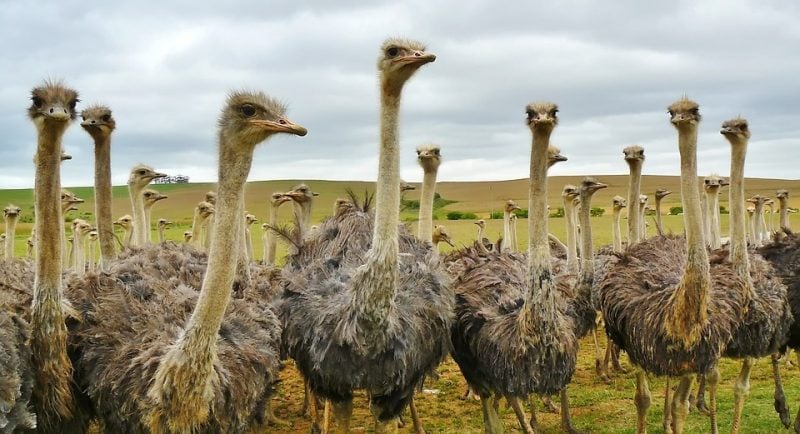
The ostrich stands out as the world’s largest and heaviest bird species, distinguished by its inability to fly. Unique among all existing bird species, the ostrich excretes urine and feces separately, unlike its avian counterparts.
Renowned for their exceptional speed, ostriches are the swiftest runners among birds and bipedal animals. They can reach staggering speeds exceeding 70 km/hr, with each stride spanning an impressive 5 meters.
Best Places to Spot Ostriches
Ostriches predominantly inhabit the semi-arid plains and woodlands across Africa. For those eager to catch a glimpse of these magnificent birds, the following locations are ideal:
- Cape Point National Park, Table Mountain reserve in Cape Town
- Oudtschoon, Western Cape
#10 Gaur
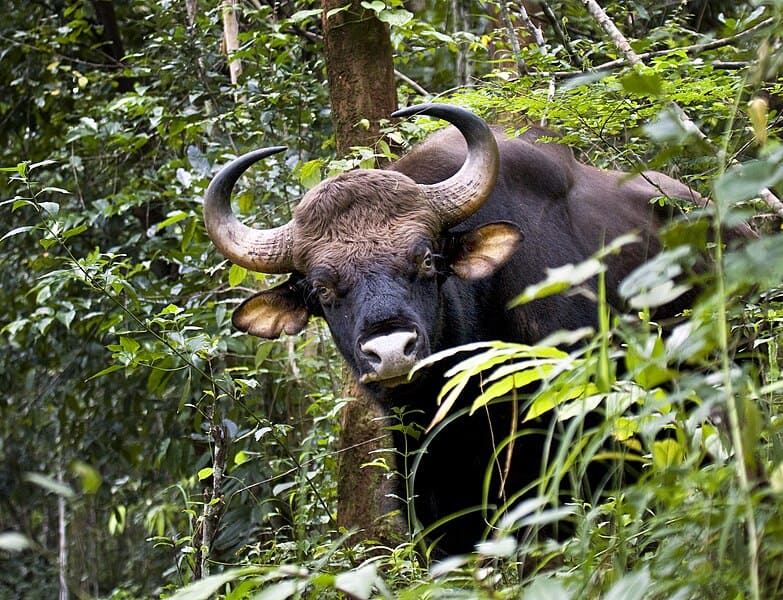
In our exploration of the world’s top 10 most significant animals, the Gaur, also known as the Indian bison, stands out as the largest wild cattle species. Native to South and Southeast Asia, the Gaur has been classified as Vulnerable on the IUCN Red List since 1986.
Male Gaurs are notably muscular and robust, possessing the strength to fend off predators, humans, and even other domestic cattle that pose a threat. These impressive animals typically form herds consisting of 30 to 50 members.
Where to Spot Gaurs
Historically, Gaurs roamed across a vast area in South and Southeast Asia, including Vietnam, Cambodia, Laos, Thailand, Peninsular Malaysia, Myanmar, India, Bangladesh, Bhutan, China, and Nepal. Unfortunately, their range has significantly reduced over the years.
Today, the distribution of the Gaur is highly fragmented, and the species is now regionally extinct in Sri Lanka.
Summary of Top 10 Biggest Animals In The World
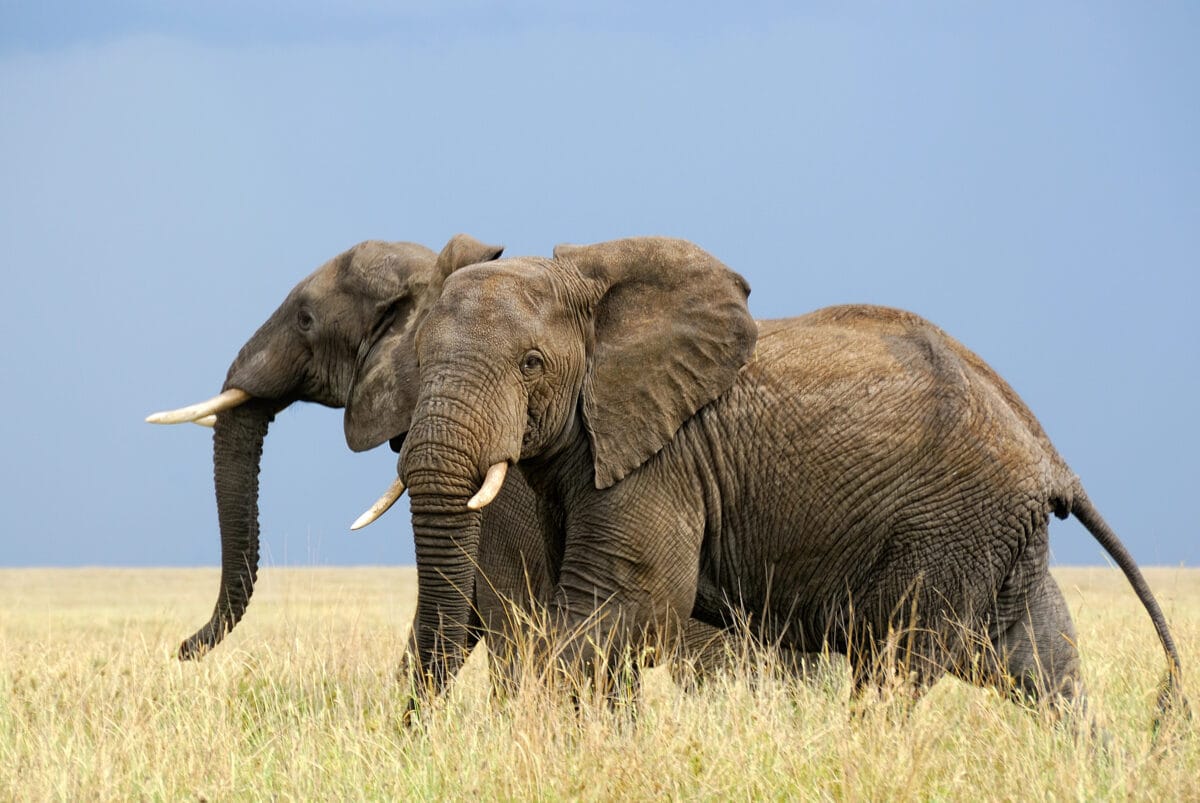
These animals are revered by their size, and a privilege to witness them in their natural Habitat. Their livelihood must be protected at all costs with sustainable tourism and ethical animal encounters.
If you enjoyed reading about the world’s top 10 most significant animals, look aWorld the full ten animal encounters in Europe post covid and the top 10 cutest animals.
Frequently Asked Questions (FAQs)
The blue whale claims the title of the largest animal on Earth.
A blue whale’s tongue can weigh as much as an elephant, approximately 4 to 5 tons.
he African elephant (Loxodonta africana) holds the title for the largest land animal. Adult male African elephants can stand over 13 feet (4 meters) tall at the shoulder and weigh up to 14,000 pounds (6,350 kilograms).
No, while some dinosaurs were indeed massive, they were not the largest animals to have ever lived. The blue whale holds that title. Dinosaurs like the Argentinosaurus and the Brachiosaurus were among the largest dinosaurs but still smaller than blue whales.
Large animals have various strategies for survival, including efficient energy conservation, long migration patterns, and specialized feeding behaviors. For example, blue whales are filter feeders, using baleen plates to capture tiny organisms like krill.
- 5 Best Places to See African Wild Dogs - April 24, 2024
- Best Places to See Giant Pandas - April 23, 2024
- Sea Snakes: A Complete Guide - April 23, 2024

